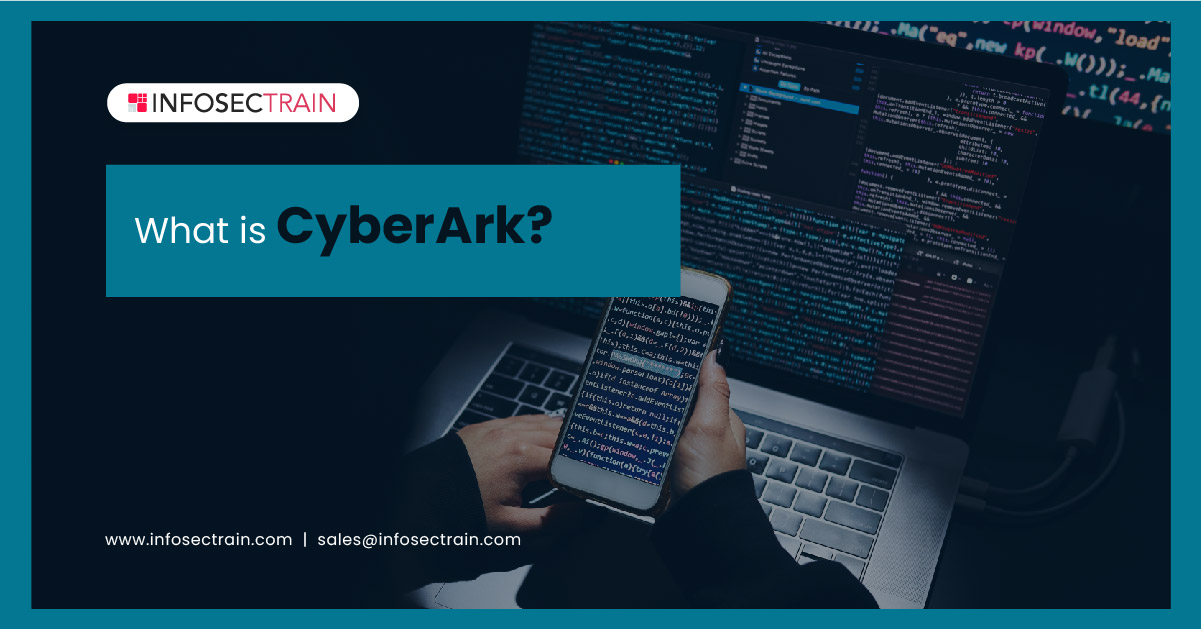What is CyberArk?
In today’s digital environment, everyone understands the need for Cybersecurity. Digital threats are wreaking havoc and causing massive losses. Attackers primarily target those organizations who have limited infrastructure and who are not in a position to fight against attacks. Because hackers target privileged accounts consistently, there is a more critical requirement for cyber defense in the case of privileged accounts. We must be prepared for such dangers and require more sophisticated Cybersecurity technologies to protect our organization’s infrastructure, accounts, credentials, secrets, etc. To defend against these attacks, the IT industry releases new technologies regularly, and the CyberArk tool is in trend currently that has significant potential to meet the security incursions.

Table of Contents
What is CyberArk?
What is a Privileged Account?
Industries using CyberArk
History of CyberArk
CyberArk Architecture
Benefits of CyberArk
CyberArk Components
CyberArk Implementation
This article will discuss CyberArk, privileged accounts, Industries using CyberArk, CyberArk history, and also CyberArk benefits, components, implementation, and design.
What is CyberArk?
CyberArk is a security solution or, to put it another way, information security software that can help a company mitigate the cyber security risk associated with privileged accounts and secure privileged accounts and credentials in an effective manner. It introduces a new class of tailored security solutions that enable administrators to avoid reacting to cyber threats.
What is a Privileged Account?
Privileged accounts are those accounts that allow a system administrator to do anything on the server. Privileged accounts allow access to sensitive information such as credit card numbers, protected health information (PHI), social security numbers, etc. The following are some of the most popular types of privileged accounts:
- Privileged customer accounts
- Local domains accounts
- Interface admin accounts
- Emergency accounts
- Service accounts
- Application accounts
- Database accounts (SYS)
- Root (Linux/Unix/Solaris)
Industries using CyberArk
The organization has faith in the CyberArk technology since its reputation is growing as it plays an increasingly important role in security and protects against malicious activity. It is utilized by more than half of the Fortune 500 companies and more than a third of the Global 2000. CyberArk is a highly defensive instrument used in various industries, including:
- Hospital & Health Care
- Financial services
- Energy
- Retail
- Government markets
- Computer Software and Hardware
- Information Technology and Services
- Banking
- Insurance
- Utilities
- Human Resources
History of CyberArk
Alon N. Cohen and current CEO Udi Mokady launched CyberArk in Israel in 1999. They formed a team of security professionals who implemented the digital vault technology. CyberArk’s headquarters are in Newton, Massachusetts, in the United States. In addition, the corporation maintains offices in America, EMEA (Europe, the Middle East and Africa), Asia Pacific, and Japan. CyberArk filed for an IPO with the Securities and Exchange Commission in June 2014, citing $66.2 million in revenue in 2013. The following year, CyberArk went public and began trading on the NASDAQ under the symbol CYBR. Viewfinity, a privately held Massachusetts-based firm specializing in privilege management and application control software, announced plans to be acquired by CyberArk.
CyberArk Architecture
The CyberArk Privileged Access Security platform comprises modules that provide highly secure services for storing and transferring passwords between businesses. The modules contain- VPN, Firewall, Access Control, Encryption, Authentication, etc.
There are two primary elements of solution architecture.
- Storage engine: The storage engine, also known as a server or Vault, keeps the data and is in charge of safeguarding it at rest, as well as assuring authentication and limited access.
- Interface: The interface is also known as the Windows interface, the Web interface, and SDKs. This interface interacts with the storage engine and grants users and applications access to the data. CyberArk’s secure protocol or a vault protocol is used to communicate between the interface and the storage engine.
Benefits of CyberArk
- Tracking credentials is simple: If you use CyberArk’s privileged account security solution, you can effortlessly track CyberArk certificates instead of manually managing passwords. CyberArk will handle the tedious portion of the track, and you won’t have to worry about other credentials, and it will take less time.
- Increased time savings: CyberArk offers a computerized password management capability that can help to remove manual processes, reducing password management time consumption.
- Lack of uniformity in revised guidelines: There will be no monotony in revising regulations because CyberArk offers admins the tools they need to work and effectively modify privilege guidelines for users.
- Lack of duplication in policy updates: CyberArk allows administrators to control, monitor, and upgrade user privilege mechanisms, ensuring no redundancy in policy updates.
CyberArk Components
1. Digital Vault: The CyberArk digital vault is the most appropriate place to secure your private data in the network. As it is preconfigured, it is ready to use right after installation.
2. Password Vault Web Access Interface: PVWA (Password Vault Web Access Interface) is a fully functional web interface for managing and assessing privileged passwords. PVWA gives you the ability to create new privileged passwords.
3. Central Policy Manager (CPM): CPM provides a password management procedure using a PAM (Privileged Access Management) system that automatically enforces industry policies. This password management procedure may automatically generate new passwords and update existing passwords on remote machines.
4. Privileged Session Manager (PSM): Privileged Session Manager allows enterprises to safeguard and audit privileged access to network connections and grant access to privileged accounts. It permits a control point to initiate secret sessions using Vaulting technology.
5. SDK Interfaces: The SDK interfaces include:
- Application Password SDK: It removes the necessity for programs to hold passwords integrated with them, allowing these highly sensitive credentials to be stored and handled centrally within the PAM system.
- Application Password Provider: It is a local server that securely acquires passwords after being retrieved from the Vault and enables password access immediately.
- Application Server Credential Provider: It maintains application server credentials saved in data source XML files in a secure and automated manner.
6. On-Demand Privileges Manager (OPM): On-Demand Privileges Manager employs Vaulting technology to secure and manage privileged access to UNIX/LINUX commands, and enables comprehensive visibility and management of super users and privileged accounts across the company.
7. Privileged Threat Analytics: Privileged Threat Analytics (PTA) examines the use of privileged accounts managed in PAM. It also keeps track of reports that CyberArk hasn’t yet regulated and analyzes indications of platform abuse.
8. Password Upload Utility: It automates and speeds up the Vault implementation process by uploading several password instances to the PAM solution.
CyberArk Implementation
CyberArk implementation can be done in a few stages. The following are some of the recommended phases:
- Analyze security and business requirements: This is the primary phase, during which you must analyze and identify security risks and outline security controls. You must also indicate assets and deadlines and identify privileged accounts and other information.
- Scope definition: In this phase, you must determine the scope and identify the stakeholders and their roles and responsibilities.
- Launching and execution: During this phase, the project’s critical performance should focus on architecture design, solution design, and solution implementation.
- Risk mitigation plan: Create a small set of accounts as a pilot, and recognize and perceive difficulties during this phase.
CyberArk with InfosecTrain
CyberArk is a security tool used to protect confidential records by executing passwords. I hope you’ve gained a better understanding of CyberArk due to this article. If you want to pursue a career in CyberArk, you can enroll in InfosecTrain’s CyberArk training course. The CyberArk training course will help you create, implement, and configure the Privileged Account Security Solution.






